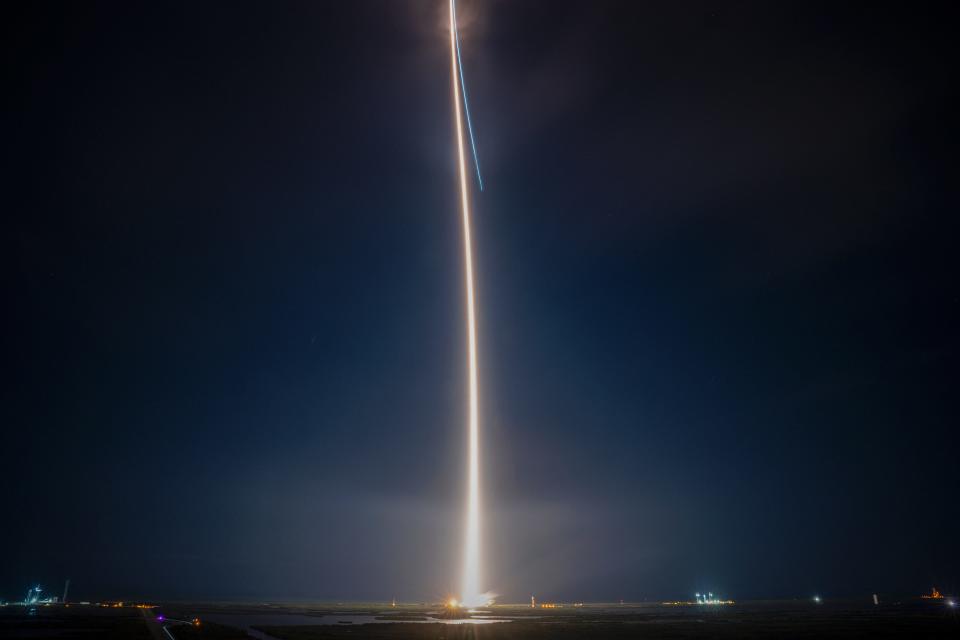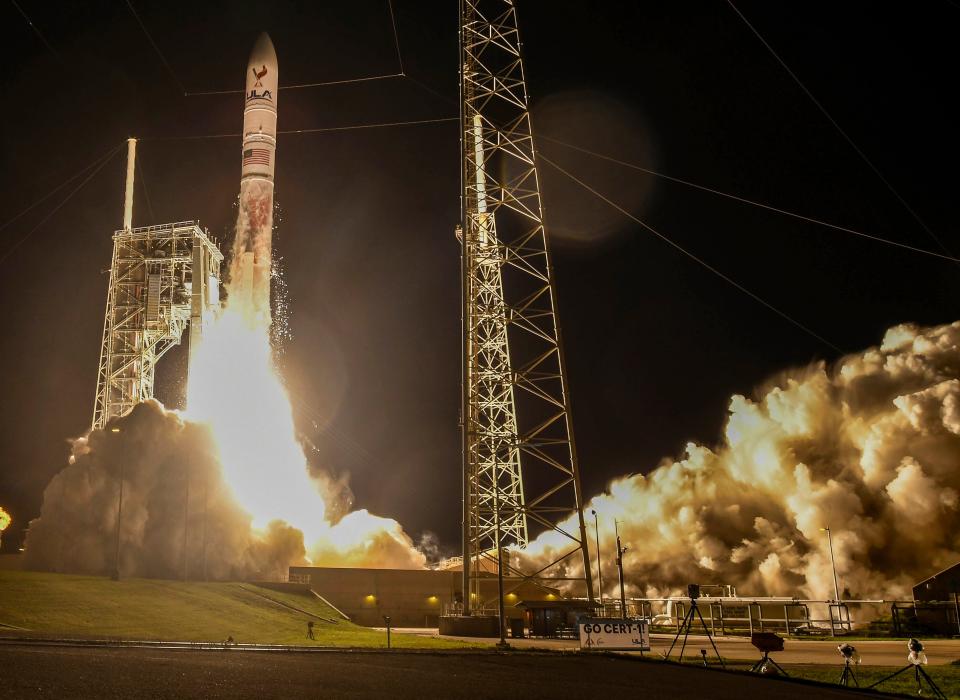Will the Peregrine lunar lander touch down on the moon? Company says it's unlikely
The U.S. may have to wait a little longer before a lunar lander can touch down on the moon for the first time in five decades.
The Peregrine spacecraft designed and operated by Pittsburgh aerospace company Astrobotic hitched a ride Monday morning aboard the United Launch Alliance's new Vulcan rocket. Liftoff from Cape Canaveral, Florida, was flawless, and the lander separated from the rocket as planned.
But shortly after Peregrine began powering its way toward the moon, it encountered a problem with its propulsion system. Though Astrobotic controllers worked from the ground to salvage the mission, the lander began leaking a "critical" amount of propellant that almost certainly has since dashed any hopes of it landing on the moon, the company said.
"At this time, the goal is to get Peregrine as close to the lunar distance as we can before it loses the ability to maintain its sun-pointing position and subsequently loses power," Astrobotic said at 9:16 p.m. EST Monday on X.
Update #6 for Peregrine Mission One: pic.twitter.com/lXh9kcubXs
— Astrobotic (@astrobotic) January 9, 2024
The year ahead in space: A return to the moon and a rare eclipse among 5 great space events on the horizon in 2024
Propellant depletion throws lunar ambitions into peril
The first snag occurred hours into the mission when Astrobotic reported a propulsion anomaly that interfered with the craft's ability to achieve a sun-facing position, which is necessary to provide solar power to charge the spacecraft’s batteries.

As the batteries began reaching "operationally low levels," the company said, the craft's ability to land on the moon became threatened.
The company expressed optimism when controllers succeeded in reorienting the craft so its solar panels could recharge its batteries. But by late Monday, hope faded again when a propulsion failure began depleting the craft's propellant, keeping it from an "uncontrollable tumble."
(1/4) We’ve received the first image from Peregrine in space! The camera utilized is mounted atop a payload deck and shows Multi-Layer Insulation (MLI) in the foreground. pic.twitter.com/dUuu0Idz8K
— Astrobotic (@astrobotic) January 8, 2024
The malfunction meant the spacecraft’s attitude control system thrusters were fighting “well beyond their expected service life cycles," Astrobotic said. As of about 9 p.m. EST Monday, the company estimated that the spacecraft could continue for another 40 hours “based on current fuel consumption” before losing power.
NASA science equipment, human remains, aboard lander

Peregrine was carrying 20 payloads from seven nations and 16 commercial customers, including space agencies like NASA, universities, companies and others.
Among the cargo was a payload of human remains bound for a lunar burial, which drew objects from the Navajo Nation.
The flight's failure is a setback for NASA, which had financed the mission in a vital step toward its goal of putting astronauts back on the moon for the first time since the last Apollo mission in 1972.
NASA spent tens of millions of dollars for a spot for its scientific cargo on the spacecraft, which represents the debut of the agency's Commercial Lunar Payload Services program (CLPS). With a budget of $2.6 billion in contracts available through 2028, the program will see NASA more often partnering with private companies to help place scientific payloads on the lunar surface.
With the success of @ulalaunch's #VulcanRocket, our country has more tools to explore space. Spaceflight is a daring adventure, and @astrobotic is making progress for CLPS deliveries and Artemis. @NASA will continue to expand our reach in the cosmos with our commercial partners. https://t.co/YqXKR7fRXz
— Bill Nelson (@SenBillNelson) January 8, 2024
For the Peregrine mission, NASA's payload included a variety of scientific instruments aboard the lander meant to conduct experiments and studies of the lunar surface and its atmosphere. The findings would have proved crucial in helping the space agency search for evidence of water and other resources that would support human exploration of the moon as part of its Artemis program.
By the end of the year, the space agency hopes to send a group of spacefarers on a 10-day trip circumnavigating the moon – but not touching down – as part of Artemis II. The mission would pave the way for another group of astronauts who in the coming years NASA hopes will land on the lunar surface itself.
"Spaceflight is a daring adventure, and Astrobotic is making progress for CLPS deliveries and Artemis," NASA Administrator Bill Nelson posted on X after news of the propulsion failure came to light. "NASA will continue to expand our reach in the cosmos with our commercial partners."
What's next for NASA?
Fortunately for NASA, Astrobotic is just one private American company racing to get the U.S. back on the moon this year.
Houston’s Intuitive Machines, the second company with lunar ambitions, aims to launch a lander in mid-February aboard a flight with SpaceX with NASA funding.
The space agency also says copies of four of the NASA payloads aboard Peregrine are expected to fly on future flights.
Astrobotic itself has a contract for another lunar mission with a targeted launch at the end of the year. The Griffin, the largest lunar lander since the Apollo lunar module, will carry NASA’s Volatiles Investigating Polar Exploration Rover (VIPER) to the moon's south pole, where it will search for water ice.
“There are many challenges with spaceflight, and we’re incredibly proud of the Astrobotic and NASA teams that have put us one step closer to a robotic return to the lunar surface as part of Artemis," Joel Kearns, deputy associate administrator for exploration at NASA, said in a statement. "This delivery service model is a first for the agency and with something new, there is a higher risk.”
Eric Lagatta covers breaking and trending news for USA TODAY. Reach him at [email protected]
This article originally appeared on USA TODAY: Peregrine moon lander suffers issues, touchdown unlikely
